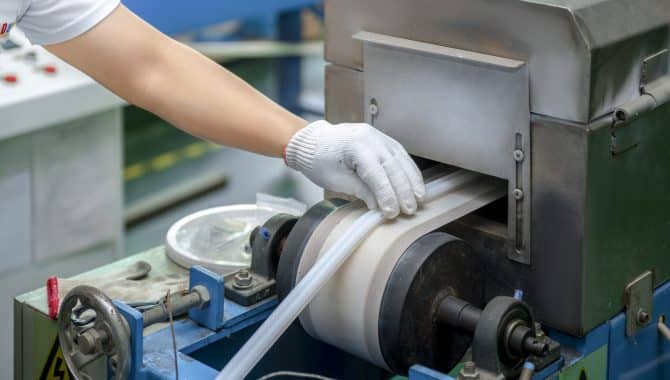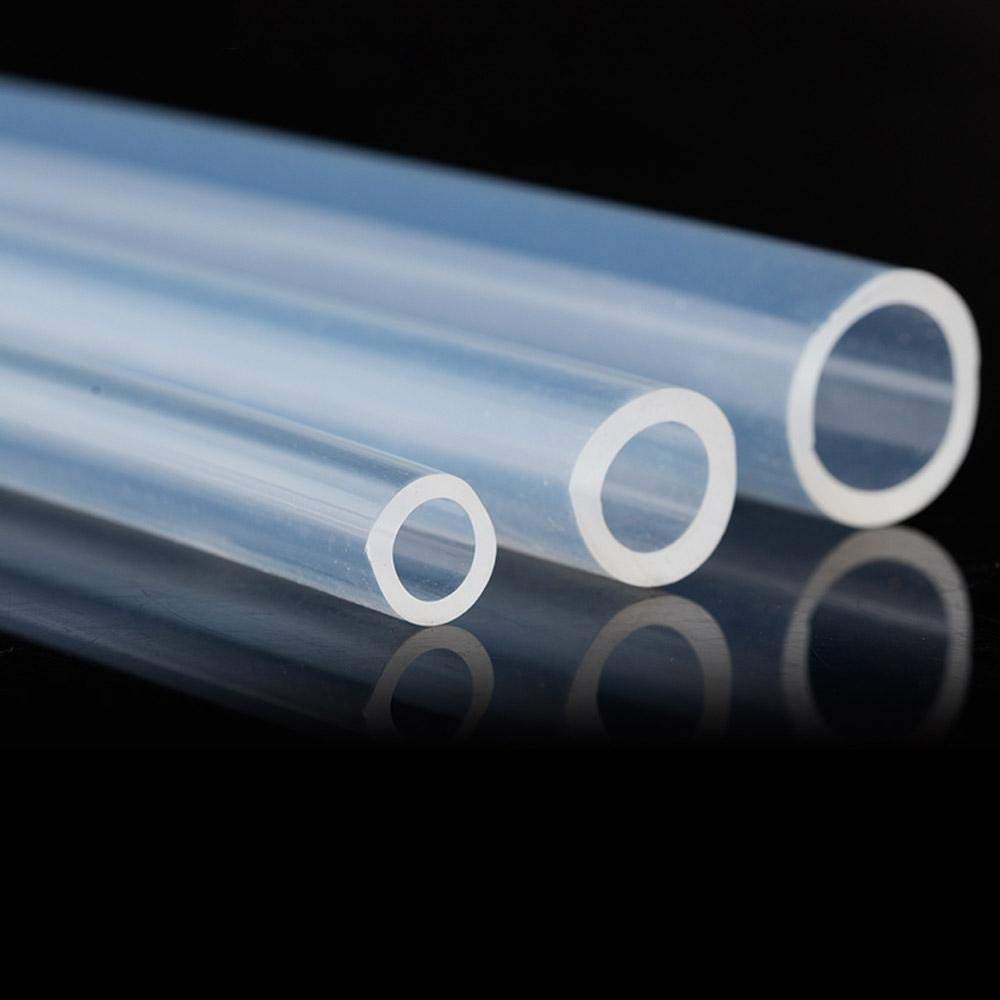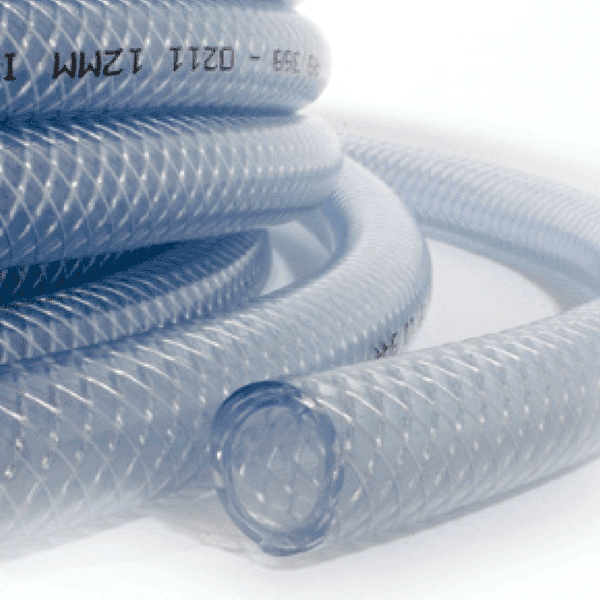What is Silicone Tubing?
Silicone tubing is a flexible and versatile tubing made of silicone rubber, a synthetic polymer known for its excellent heat and chemical resistance. Due to its unique properties, it is widely used in various industries and applications. Silicone tubing has high temperature stability and is suitable for low and high temperature environments. Additionally, it has excellent electrical insulating properties, making it ideal for applications in the electronics industry. Silicone tubing is also widely used in the medical field due to its biocompatibility and non-toxicity, for fluid delivery in medical devices and equipment. Additionally, it is commonly used in the food and beverage industry to transport liquids and gases because it is odorless, tasteless and resistant to bacterial growth. The flexibility and durability of silicone tubing make it a popular choice for laboratories, automotive, aerospace, and many other applications that require a reliable and chemically inert tubing solution.
How to Manufacturing Silicone Tubing?
Silicone tubing is fabricated using a widely employed process known as rubber extrusion.
- Silicone Extrusion Process
The extrusion process is a cost-effective method for producing large quantities of silicone products with short lead times. It is commonly used by rubber manufacturers. The process involves several steps. First, a heated and cured silicone formulation compound is prefabricated into slabs or strips.

The shaped silicone is then fed into a screw extruder, which pushes the compound through a hardened steel die. The die shapes the silicone tube as it is forced through. Finally, the silicone profile exits the mold and is cured by continuous pulling through a heating and curing oven.
Several ovens are utilized to circulate hot air in both vertical and horizontal directions, including salt bath cures, steam vulcanization, and infrared cures. Some fabricators opt to perform silicone vulcanization after extrusion into a long trough filled with salt water. However, this technique presents a significant challenge of selecting the appropriate raw materials capable of performing optimally in temperature and mechanically controlled processes to meet product specifications.

- Injection Molding Processes of Silicone Tubing
Injection molding is a widely used manufacturing method for silicone tubing. The process ensures high-volume production of flexible and durable parts through several steps. One of the most commonly used methods for producing silicone tubing is the liquid silicone rubber (LSR) injection molding process.
This process involves mixing two separate components in specific proportions to form the liquid raw material, which is then injected into molds under high pressure. After the product has been cooled inside the mold, it undergoes demoulding and final inspection.
What is the Difference Between Silicone Extrusion and Injection Molding ?
Silicone extrusion and silicone injection molding are two distinct manufacturing processes used to produce silicone tubing, each offering unique benefits and applications.
Silicone Extrusion:
Extrusion is a continuous process. Raw silicone material is fed into an extruder and forced through a die. This creates a continuous profile of the desired pipe shape. The extruded silicone profile is then cooled and cut to desired lengths. This process is suitable for producing long lengths of tubing with a consistent cross-section. It is cost-effective for high-volume production. Ideal for manufacturing simple and uniform silicone tubing designs, such as straight tubing or profiles with a constant cross-section.
Silicone Injection Molding:
Injection molding is a batch process. Silicone material is preheated and injected into a mold cavity under high pressure. This forms the mold shape.The silicone is allowed to cool and solidify within the mold before being ejected as the final tubing product. Injection molding allows for more complex tubing designs with various features. It can include flanges, connectors, and different wall thicknesses. This process is suitable for producing small batches of silicone tubing with specific shapes and details. It is a good choice for custom or specialty applications, including medical tubing or tubing with specific over-molded characteristics.
When deciding between silicone extrusion and silicone injection molding, consider factors such as desired tubing design, throughput, and specific application requirements. Silicone extrusion is best for high-volume production of simple and consistent silicone tube designs, while silicone injection molding is more suitable for producing custom or complex tubes with intricate features, although it is more suitable for low volumes.
How to Choose Size for Your Silicone Rubber Tube?
Silicone tubing is available in various sizes to suit different applications and industries. The sizes typically vary in terms of inner diameter (ID), outer diameter (OD), and wall thickness. Here are some common silicone tubing sizes:
• Small Sizes
These are often used for precise applications, including laboratory experiments, medical devices, and electronics. The inner diameters can range from fractions of a millimeter to a few millimeters.
• Standard Sizes
Widely used in various industries for fluid and gas transfer, as well as in peristaltic pumps. Standard sizes usually have inner diameters from 1/16 inch (1.6 mm) to 1 inch (25.4 mm) or more.
• Large Sizes
Suitable for heavy-duty applications like industrial fluid handling, food and beverage processing, and chemical transportation. The inner diameters can exceed 1 inch, going up to several inches.
• Custom Sizes
Depending on the manufacturer and the application, silicone tubing can be produced in custom sizes to meet specific requirements.
When selecting silicone tubing sizes, it is important to consider factors such as intended use, flow rates, pressure, temperature, and substance compatibility. Consulting with a silicone supplier or silicone manufacturer can help determine the most appropriate silicone rubber tube size for a particular application.
Silicone Tubing own varies styles. Now I will introduce some types of silicone tubing widely applied in our daily life.
- Silicone Peroxide Cured Tubing
Silicone peroxide-cured tubing is a type of silicone tubing that undergoes a curing process using peroxides as the curing agent. This critical step in the manufacturing of silicone products involves cross-linking the silicone material to enhance its physical properties.Silicone peroxide tubing is available in various diameters and has a translucent appearance.

It is primarily used in applications that do not require high purity, repeated sterilization, or critical dosing. This type of silicone tubing finds common use in pump and transfer applications, including automotive and industrial fields. It can withstand temperatures as high as 392 °F (200 °C). Moreover, peroxide-cured silicone tubing is cost-effective compared to many other compounds, making it suitable for general tubing applications.
- Silicone Daily Tubing
Silicone dairy tubing is a specialized type of tubing designed and manufactured specifically for use in the dairy industry. It offers a reliable and hygienic solution for fluid transfer in various dairy processing and handling applications. Most silicone dairy tubes are platinum-cured, which brings numerous benefits compared to other tubing products.
For instance, silicone dairy tubing is non-yellowing and free from peroxide by-products. It does not harden or corrode even after prolonged use. Moreover, it features an extra-smooth inner bore to enhance flow rate and hygiene levels.
- Platinum-Cured Silicone Tubing
Platinum-cured silicone tubing is a type of silicone tubing prepared using a platinum-based catalyst during the curing process. This method of curing, also known as Addition Cure or Additive Platinum Cure, offers several advantages over other types of silicone curing methods. Platinum-cured silicone tubing is widely used in industries requiring high-purity, biocompatible, and chemically inert materials.
The use of platinum as a catalyst ensures that the tubing does not introduce any impurities or by-products, making it suitable for critical applications in the medical, pharmaceutical and food industries. This type of silicone tubing is known for its exceptional clarity, flexibility, and low extractables, making it an excellent choice for applications where maintaining product purity and integrity is critical. In addition, platinum-cured silicone tubing has excellent heat resistance and is able to withstand a wide range of temperatures, providing reliability and durability in a variety of demanding environments. Its bio-compatibility also makes it suitable for applications such as fluid delivery in medical devices and implants.
- High-Temperature Silicone Tubing
High-temperature silicone tubing is a resilient product designed to endure extreme temperatures and harsh conditions. It finds extensive use in industries that require durable and flexible piping capable of handling both high and low temperatures. It is important to note that the name of a silicone hose is usually accompanied by a number, such as 550, indicating its maximum heat tolerance.

To ensure the right selection of high-temperature silicone hose, proper consideration of anticipated temperatures is crucial. However, it’s worth mentioning that while a hose may withstand high temperatures, it doesn’t mean it won’t burn or catch fire. The burn point signifies a material’s ability to ignite when exposed to fire, and it’s necessary to verify if the hose is manufactured with flame retardant materials for high-temperature ducts intended to withstand flames.

- Silicone Braided Tubing
Silicone braided tube is a special type of silicone tube that is reinforced by adding braided fibers or threads. The woven construction provides enhanced strength and pressure resistance, making it suitable for a variety of applications. Such pipes are commonly used in industries such as medical, pharmaceutical, and food processing, where maintaining the integrity of fluid delivery systems is critical. Its biocompatibility, chemical inertness and high temperature resistance make it ideal for applications in contact with sensitive fluids and harsh environments.
Whether used in peristaltic pumps, dental equipment or flexible hose assemblies, silicone braid tubes provide a reliable solution that meets the stringent requirements of critical applications while ensuring long-lasting and efficient performance.
- Food-Grade Silicone Tubing
Food-grade silicone is a strong and durable alternative to plastic in food and beverage applications. It offers a healthier option because it doesn’t leach harmful chemicals like BPA into foods and beverages. In addition, it prevents the transfer of taste and aroma. With its strength, non-porous nature and ability to withstand varying temperatures, silicone is an excellent choice for food storage and transportation, reducing reliance on single-use plastics.

Additionally, this reliable silicone tubing is ideal for the food and beverage industry. It is stable, temperature resistant and non-stick. It does not react with food ingredients or liquids and can be easily sterilized in a standard autoclave. In addition, the surface quality of the tubing prevents the accumulation of transported substances inside the tubing.

- Medical Silicone Tubing
In food and beverage applications, food-grade silicone provides a sturdy and long-lasting alternative to plastic. It is a healthier alternative because it does not leach dangerous chemicals such as BPA into meals and beverages. Furthermore, it prevents the transfer of flavor and scent.
Silicone is a great alternative for food storage and transportation due to its resilience, non-porous texture, and ability to resist fluctuating temperatures, decreasing dependency on single-use plastics.
Furthermore, this dependable silicone tubing is suitable for the food and beverage industries. It is nonstick, stable, and temperature resistant. It does not react with food or liquids and is easily sterilizable in a regular autoclave. Furthermore, the tubing’s surface quality avoids the accumulation of carried contaminants inside the tube.
- Colored Silicone Tubing
Colored silicone tubing is a specialized type of silicone tubing that comes in a variety of vibrant colors, in addition to the standard translucent or clear options. This colored tubing serves both functional and aesthetic purposes across various industries and applications. Functionally, the colored silicone tubing allows for easy identification and differentiation of different fluid or gas lines in complex systems, reducing the risk of cross-contamination and facilitating maintenance and troubleshooting.
Aesthetically, the tubing’s vibrant colors add a visually appealing touch to equipment, machinery, and consumer products. Colored silicone tubing finds use in a range of applications, including medical devices, automotive systems, food and beverage processing, electronics, and even decorative purposes.
How to Clean Silicone Tubing?
Regular line cleaning is required if silicone tubes are used in food processing facilities, such as homebrew equipment or soft drink dispensers. Because the silicone tube can be boiled to remove any dirt inside the hose, it is suitable for home brewing equipment. This cleaning procedure must be done on a frequent basis to avoid accumulation, clogging, and unpleasant odors. When silicone tubing is used in other industries, such as the automotive industry, it may not be necessary to clean the inside of the tube on a regular basis. Wiping or pushing hot soapy water through a silicone tube is one of the simplest ways to clean it. It makes no difference how hot the water is because silica gel has a great heat resistance. Certain cleaning solutions, however, can have a negative reaction on silicone tubes, causing damage and discolouration. As a result, avoid using WD40 or petroleum-based cleaning agents while cleaning silicone tubes.
How to Connect Silicone Rubber Tube?
- (IPA) Isopropyl alcohol
The silicone is lubricated with IPA so that it can slip over the barb junction. Because IPA absorbs water, it is essentially hygroscopic. IPA is utilized in its purest form when used with silicone tubes. It is widely available and reasonably priced. Another benefit of IPA is that it evaporates quickly, leaving little residue on medical devices. The primary downside is the lengthy drying time. This lengthens the process, reducing productivity and costing the producer extra time and money. Other methods, such as using low temperatures on silicone tubes, aid in the drying process.
- Silicone Oil
Utilizing a silicone oil-based lubricant is an additional method of joining silicone tubes. Engineers are the ones that utilize this procedure the most frequently since it is simple and ensures material compatibility by using silicone oil to add silicone. However, silicone oil has a few significant drawbacks. Due to the nature of the oil, which never evaporates and is made to stay on the surface permanently, its application can be extensively untidy. Silicone is easily transferred to different surfaces.
Therefore, it can be tricky to accommodate the fluid during the coating process if the producer only has to coat a particular area of the device. As a result, the coating and joining process will take longer because additional cleanup will be needed once the pieces are joined.
The risk of contamination during the coating process also rises since the oil draws and holds dust and dirt from the environment. Contamination is still a risk even when clean rooms are employed. In comparison to lower quality silicone used in other industries, medical grade silicone is more pricey.
- Silicone Swelling
Similar to how a sponge absorbs water, silica gel expands upon use. The silicone tube’s size expands like a sponge when it starts to absorb the solvent before contracting again. Once the solvent has evaporated after shrinkage, it will regain its previous size. As a result, metal components or barb fittings are tightly sealed. Using silicone tubes or parts with barb fittings allows for quick and simple attachment thanks to silicone expansion.
The entire swelling process can happen in less than a minute as, in many circumstances, the silicone’s size only needs to be increased by 1% to 2%. First, a container with a swelling agent gets tossed in with the silicone end that will be linked to the barb fitting. When a tube or component is submerged in water, it almost immediately starts to expand. The length of time the tube gets immersed in the solution affects how much it expands. As a result, high volume processes can be timed precisely for optimal effectiveness.
- Barb fasteners
In barb joints, barb ridges or serrated regions grasp the inner tube wall and provide a firmly sealed surface without harming the tube wall. Due to their simplicity of installation, barbed couplings, particularly also known as hose barbs or hose barbed connectors, are frequently employed. It is suitable for low-pressure fluid, gas, and airflow applications requiring 200 psi or less because to the tight seal provided by the barb connectors. The interaction between the connector surface and the tube wall determines whether the connection will seal.
As was already said, silicone tubing is a hard elastomer with a variety of beneficial characteristics, such as high temperature resistance, high flexibility, superior wear and tear resistance, and resistance to UV and ozone. Due to these advantages, silicone tubing is frequently used in a range of industries, including the food and medical ones.
You can be sure you’re getting the best silicone tubing for your process when you get it from NEWTOPLSRINJECTION. With our manufacturing method, we obtain very low extractables, so you can bank on that. For pump and pinch valve applications, this incorporates a twofold post-cure that reduces all volatiles and boosts cross-linking, extending life expectancy.
